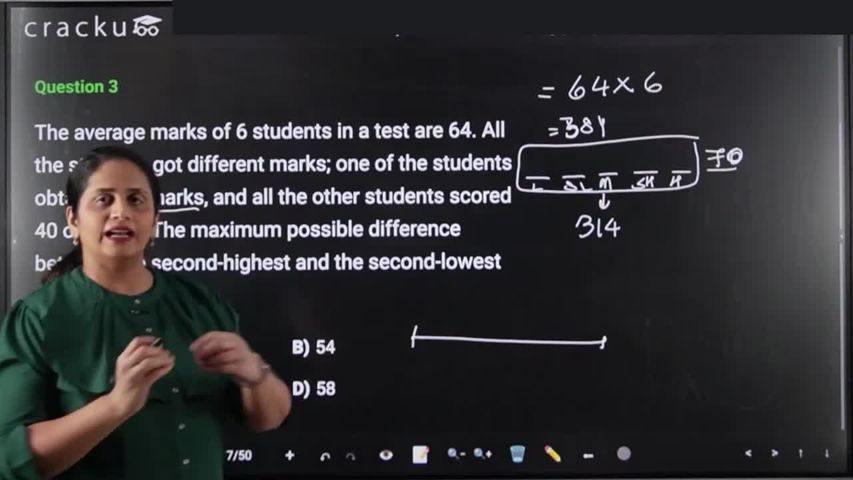The average marks of 6 students in a test are 64. All the students got different marks; one of the students obtained 70 marks, and all the other students scored 40 or above. The maximum possible difference between the second-highest and the second-lowest marks is
Solution
Let the scores of 6 six students be a, b, c, d, e, and 70. The average marks of 6 students in a test are 64. Therefore, the sum of marks for all the students will be 384.
Now, we need to maximise the difference between the second-highest and the second-lowest marks. For this, we have to minimise the second-lowest marks and maximise the second-highest marks.
Since all the marks are 40 and above, the lowest mark (a) can be 40, the second lowest (b) can be 41, and the third lowest (c) can be 42. We will assume that 70 is the fourth lowest mark, because if it is not, then it will be either the highest or the second highest, and in both cases, the required difference will be at most 29. But, if 70 is the fourth lowest, then the required difference will be more than 29.
=> 40 + 41 + 42 + 70 + d + e = 384
=> d + e = 191
Assuming e as the highest mark, we need to maximise d as well to maximise the desired difference. Thus, we can choose d = 95, and e = 96.
Therefore, the maximum difference between the second-lowest and the second-highest marks = 95 - 41 = 54.
Video Solution

Click on the Email ☝️ to Watch the Video Solution
Create a FREE account and get:
- Download Maths Shortcuts PDF
- Get 300+ previous papers with solutions PDF
- 500+ Online Tests for Free

